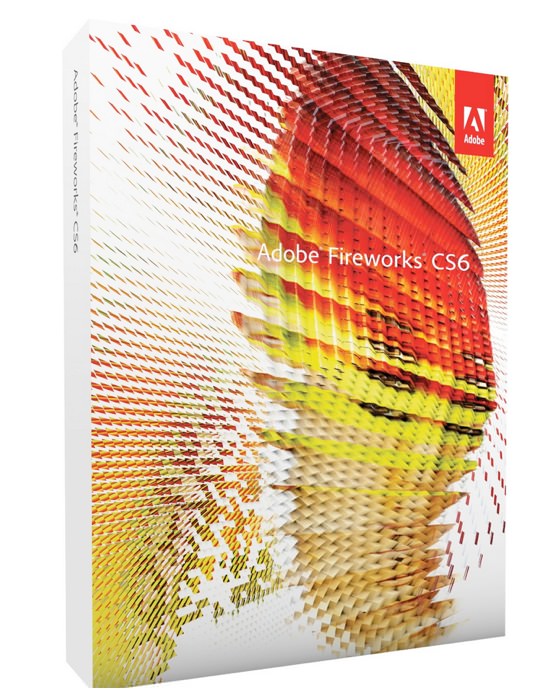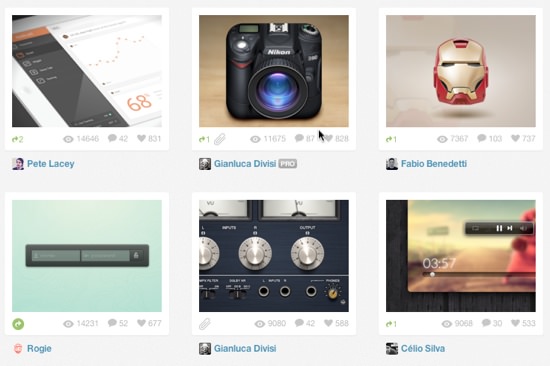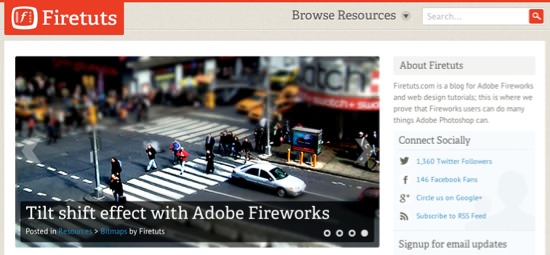The Fireworks Lament [IMHO]
A few days ago Adobe caused an outcry with its announcement to not develop Fireworks, their web design prototyper, further. Though they did not really call it quits, instead promised to make sure Fireworks would receive necessary updates in terms of security or OS adaptation, furious users started their campaigns to „save Fireworks“ from oblivion. Even a petition has been started to try and force Adobe to release Fireworks as Open Source or in the alternative at least promise to not stop development. These things are nothing new. Softwares come and go.

The Evolution of Web Design Software
In the nineties, Macromedia introduced a clever tool for web designers. The tool was named Fireworks and its abilities where mostly aimed at creating image-rich static website designs. Animated gifs where hot at the time and Fireworks would let you build them in the easiest way possible. Hover states with different images were a snap with Macromedia’s tool. Yet, already at that time, Fireworks was never able to reach the same level of attention and wide-spread usage Dreamweaver, the second important Macromedia product, was able to achieve.
I admit to have been one of the early adopters. I have been using Fireworks and really designed and exported lots of websites or parts thereof. I made a decent amount of money in the shortest time possible, compared to other techniques I could have used. But this was at that time. The web was all colorful and flashy. If you could design a UI where e.g. a phone would visually be picked up on hover you could call yourself the king of designs. And I sure felt that way.
Need I say that of course all Fireworks designs were based on tables, one-pixel gifs and absolute positioning?
Then, things started to change quite quickly. Accessible design was the new buzz, although up until today accessible design has not gained the traction you could expect given the time it is being talked about. The first time I encountered the new world of pure CSS was in 2001. I was interested, yet terrified as this would mean a totally different approach to design as I knew it. And certainly, Fireworks would no longer be the one-stop shop it had been until then.
Adobe, by the way, had already ramped up its Photoshop with a satellite solution called ImageReady, clearly aimed at users of Fireworks. ImageReady implemented the same way of cutting, slicing and creating different states of the same image Fireworks did. It came over a little uncomfortable though, as you had to design in Photoshop, then call ImageReady from there to do the necessary slicing and things and then, from ImageReady, leave again back to Photoshop. It wasn’t exactly what you’d call streamlined.
But, and that had me quick enough, it combined the powerful image editing capabilities of Photoshop with techniques needed in web design. Sliced images out of PS/ImageReady looked much more elegant than those done using Fireworks purely. It must have been around 2003 when I decided to stay with Dreamweaver, but leave for Photoshop.
Two years later, Adobe bought Macromedia and its product range. In favor of Dreamweaver they discontinued their own Go Live (2008) and in favor of Fireworks they discontinued their own ImageReady (2007). A lot of features of ImageReady got baked into the core of Photoshop, but the path was clear. Fireworks would be the new web designer tool. Need I mention, that there were outcries caused in both cases of discontinuation?
The web changed further. Still Photoshop or Fireworks designs were common, but more in the form of prototypes and not in the form of to be exported ready-made designs that would go live directly from the image editor.
Today, designs still get prototyped in Photoshop, Illustrator, InDesign, Fireworks or whatever product the designer sees fit, can handle or for whatever reasons prefers to use. Yet, today CSS is the top dog, the principles of print design, from where web design naturally evolved are more and more turned behind.
Today we all agree that web design has no longer a lot in common with print design. When Fireworks got incepted, this was totally different. You might object and argue that Fireworks got developed further and is now able to support CSS based designs and such. But this does not change the product’s roots, the reasons for its inception. And these roots are drying fast…
[caption id="attachment_76454" align="alignleft" width="550"] Dribbblers show off their Fireworks skills[/caption]
Dribbblers show off their Fireworks skills[/caption]
Deeply Shaken Fireworks Users Close To Tears
Now, as no surprise to me, Adobe announced the discontinuation of the Fireworks product. It is not that they will be axing it in the way Google will do to its Reader product. It is just that they will not put any perspective to it, feature-freeze you might as well call it. They will still sell it, they will provide security updates and they will make sure it runs on future OS versions as long as possible or technically sensible.
This is not what I would call a harsh move. Still, as always, an outcry gets caused. Why? Can we agree that the web will change further? From what we’ve seen in the course of the last fifteen years can we predict that web design will never return to print design principles? Is it not more likely to assume web design will heighten the distance to print rather than reduce it?
If we can agree on all of this, what is the bottom line? The bottom line is, softwares such as Fireworks will continue to be shrinking in importance. We will be using different tools for a subset of what still will be necessary related to our designs, but we can easily go without giant one-stop shop software bloated with features becoming more and more mediocre.
So where do we stand? If you love yourself your Fireworks, continue to use it as long as possible, which will be quite a few years from now. The better advice might probably be to look for new tools with a more contemporary approach. The best advice will be to focus on the skills that will never become irrelevant. I am talking about HTML, CSS and JavaScript. If you can handle these, no discontinuation notice of any software can ever become existence-threatening to your design business. Never rely on tools, rely on knowledge.
[caption id="attachment_76452" align="alignleft" width="550"] Firetuts.com: Fireworks Tutorials Galore[/caption]
Firetuts.com: Fireworks Tutorials Galore[/caption]
That said, I am ready to go off the stage and let other opinions enter. Greg Heade even started a campaign over at Change.org. He raised a petition in a try to find enough supporters to impress Adobe by the sheer numbers. His goal: Either open source Fireworks or promise to develop it further. In three days around 1,800 people signed it. If this does not gain more traction fast, I wouldn’t expect a lot of impact from it. So, if you are still drying your tears caused by Adobe’s announcement, head over to Change.org and sign Greg’s petition.
Greg runs Firetuts.com, so what would you expect ;-) Nevertheless, this is perfectly legitimate. Support him, if you agree.

NOOOO!
WTF ADOBE YOU DISAPPOINT AGAIN!
Macromedia please reclaim all of your software Adobe was too stupid to know what to do with it or know how to integrate it.
To be honest, Fireworks is only slightly better than Photoshop for web design. It crashes a lot and slows to a crawl when you get around 5 or 6 pages of stuff in one document. It’s masking abilities are atrocious. I also have yet to see a web design program that can style elements the same way they can be styled in CSS. Why is that? CSS supports dashes, dots, em spacing, etc. Yet NO app supports styling graphic or text elements the same way as CSS.
We need something new. I am curiously looking forward to seeing what this is about:
http://tribaloid.com
@Tim
Spoken by someone who tries to use Ps techniques in Fw. Fw is light years better if you think outside the box and concede that it require a completely different workflow than Ps. Once you understand that you don’t need to do 6 steps to complete a simple task it will click and you will wonder how you ever got anything done in Ps to begin with.
I really, really confused about the masking comment. How is the masking atrocious?
I have thousands of Fw source files ranging back to v2 and I’ve never had the slowdown you mention. Of course, I use it properly too. Most of my source files have over 6 pages or highly complex designs using Fw techniques.
The CSS comment confuses me too. Fw is the only app where the FX actually translate to CSS. No other program besides Sketch even comes close. Fw FX haven’t changed since their inception yet they still translate wonderfully.
Of course, I only have 15+ years experience with professional website development, so what do I know?
Craig, you obviously do not use Fireworks to try and design complex websites where you have a site template, homepage, product category page, some product pages, a cart page, a checkout page, and a few landing pages. Also throw in some paragraph styles and symbols on each page and Fireworks slows to a crawl and crashes quite often.
I have tried to use bitmap masks in Fireworks and trying to paint a large fuzzy mask on an object is almost as bad as trying to use Photoshop CS6 paragraph styles as far as how slow it can be.
Maybe it’s because I am using the Mac version? I’ve heard the Windows version runs better? I don;t know, but really I don’t care. Adobe has ruined this software. I used it back at version 1 and 2 and it was fine.
I am unsure why you’d make the comment about CSS? Are you telling me that The CSS and HTML that Fireworks exports translates correctly when viewed in a browser? I am calling BS on that big time. I have a Fireworks document open right now with a simple rectangle filled with a color and the Dashed Triple stroke applied to it. I’ve exported it to CSS/HTML and open it in my browser. The Dashed Triple stroke is converted to a plain old CSS dashed border. Obviously, there is no such option for a Dashed Triple stroke in CSS, but therein lies the problem with web design apps.
On top of that, there is not a single design program that renders text the same way that it is rendered in a web browser and with the same spacing and size options. Fireworks does not have em spacing, percentage spacing, points, picas or ANYTHING other than pixels. This is a glaring oversight. The web is not always measured in pixels, especially with responsive designs.
Therefore, my comment about CSS is that there is absolutely NO program available today that has CSS styling built into it that will translate properly to today’s standards for CSS.
I don’t know how you can think so if you have 15+ years doing that.
This article shows how missunderstood Fireworks really are. FW is a great sketch tool for creating rapid prototypes/views early in a process. FW fits very well in an agile project with demanding of fast changes. I would not recommend any team to start up sketching directy in HTML, CSS & JavaScript.
I’ve been a Fireworks user for years and it’s my preferred tool of choice but the web is changing and so is how many of us work. Things like petitioning a company to open source their software is pointless and bordering on stupid but I’m encouraged by the steps the Adobe web tools team are taking with things like Edge Reflow and their other efforts and if you’re really that worried, check out this tweet from Alex on their web tools team.
https://twitter.com/aexmo/status/332133862551474176
“We are actively working on next-generation solutions for screen design and prototyping” can’t say it clearer than that.
…which will only be available for rent at $20/month
Awesome blog! usually in our concern we do with this fireworks. so this is a informative post for us!
Fireworks is indeed a great and a handy tool, I mostly used it to rustle up a quick demo. I have always been designing in the traditional way, working it out first through the photoshop and then slicing it out and using dreamweaver to create the web pages.
But I am strong votary of the idea, if Adobe are abandoning FW then they should make it freely available in opensource format. This will further hasten the develop and the maturity of the product.
This actually comes as a shock to me. I started using Fireworks after Adobe brought it into the family, and to this day it is the most efficient tool for our UX development team. The ease with with we can prototype web sites and crank out images is unmatched in Photoshop or Illustrator.
I find the idea of CSS replacing design in Fireworks as silly and non-sequester as HTML5 replacing Flash. It’s not the same.
That that is my shock: it is unmatched. I do take it as yet another way Adobe is blithely janking its audience around, though the root of the problem is really a lack of competition. This idea we can “make” Adobe do anything is a joke.
I’ve used Fireworks since version 1, and I’ve never used it for prototyping. It’s a superb vector graphics package that does pretty much everything I’ve ever needed it to do in my role as a web developer.
Its far, FAR more than just a prototyper – something which this article seems to miss entirely. I can do things in Fireworks in a minute that would take 10 in the “superior” Photoshop.
Absolutely agree. You know what you are saying. You know the product in depth.
People simply think they know and speak their minds about things. But they just see what they want to see.
Fireworks is THE BEST VECTOR EDITOR out there. The best by far.
Is simply not comparable to any other software when we talk vectors. Quality wise and ease of use.
But this is not even considered or known by almost nobody of these who speak to say this or that.
I agree with this. I watch some of my fellow designers work in Photoshop, and I am just stunned at how much clicking goes on to do simple things.
I need it for drawing real vectors, fast as the wind, creating game assets, illustrations, not to do webdesign.
Nobody seems to understand how good FW is for that. Light years better than Illustrator, and 100% vectors, unlike PS.
But usually is always someone that hardly knows the product who is speaking, or someone that only see it as a layout and protyping tool.
Fireworks is much more than that. It was created for screen graphics originally.
I was an earlier adopter of Fireworks, and I have found that one of its major strengths was the way it combined the strengths of Photoshop with those of Illustrator in a great package. Everything web friendly that is now in Photoshop and Illustrator came from Fireworks.
That said, for someone who designs inside a set template (large SaaS hiring platform), I find myself favoring CSS and HTML to design new features. It is easier to respond more quickly to changes, and in the future, I hope that the prototypes we make are pulled in directly by engineering.
If I were still designing custom websites every few months, I would be more disappointed by this. And make no mistake, I am sad that it is being put out to pasture. But as the article says, software comes and goes. Hopefully, one of the alternatives will step up and fill the gap. In a dream world, Adobe will open the source. But realistically, everyone should hold on to their download file as long as possible.